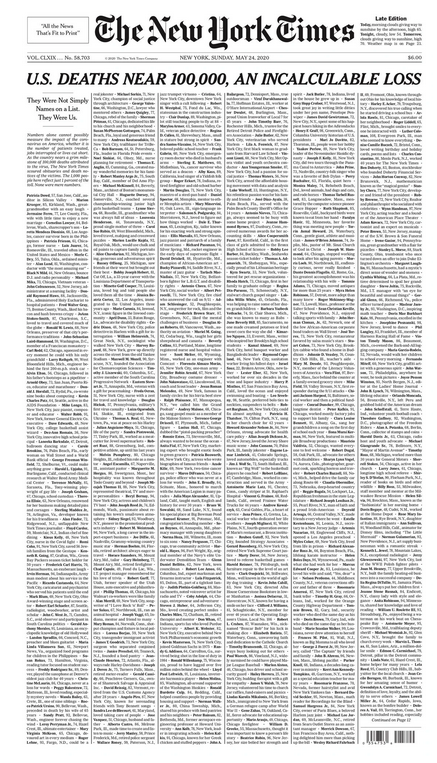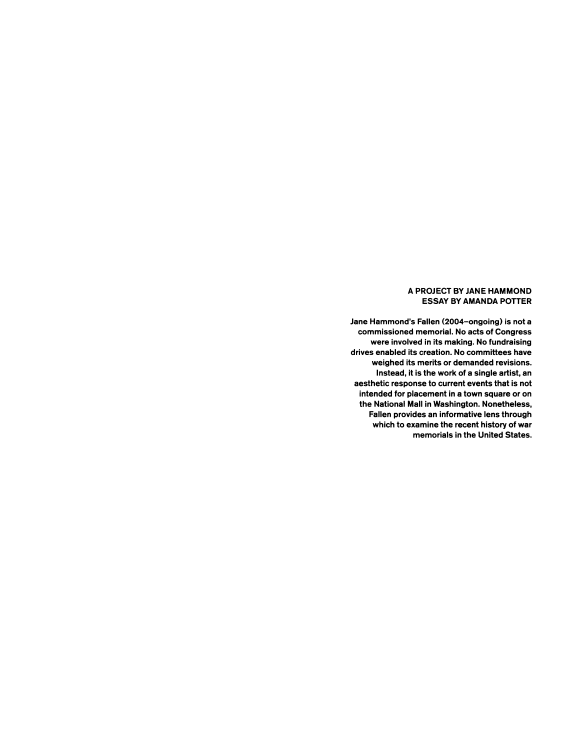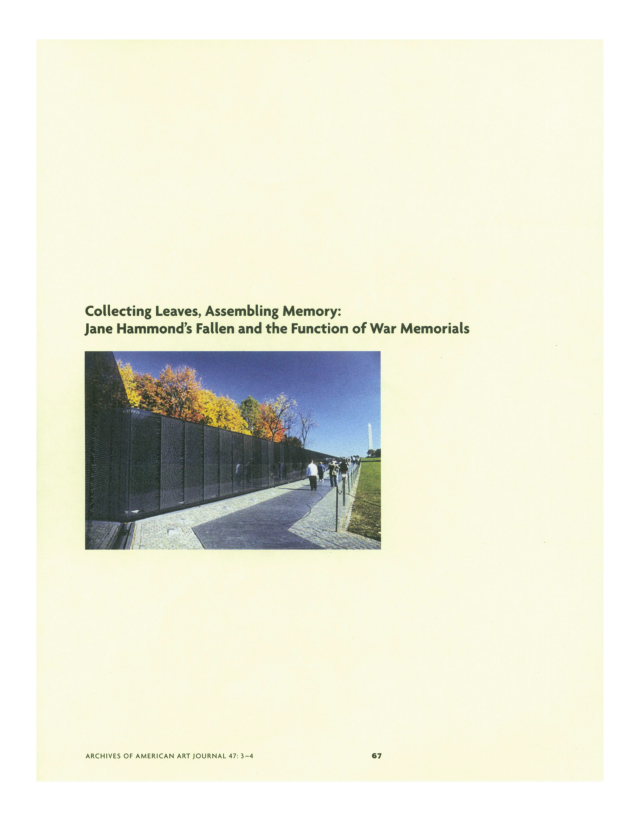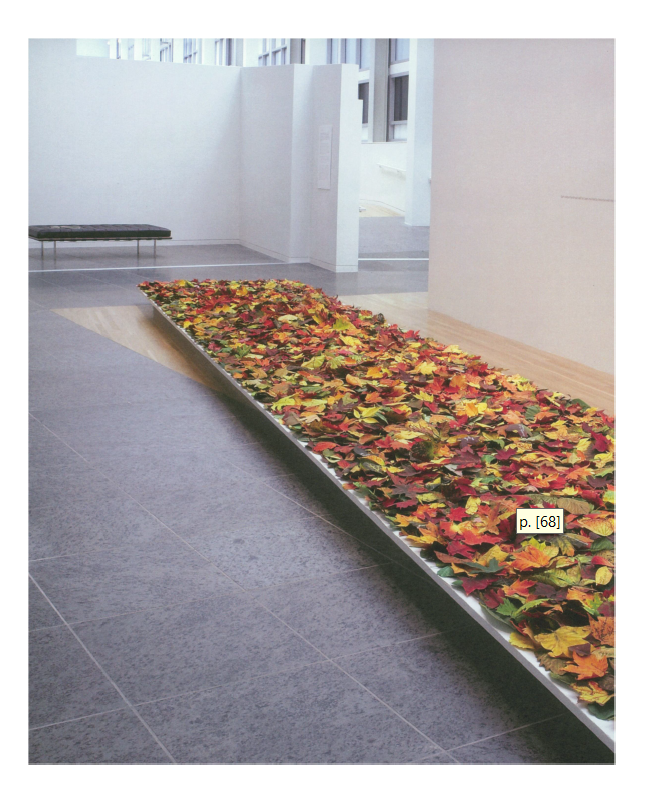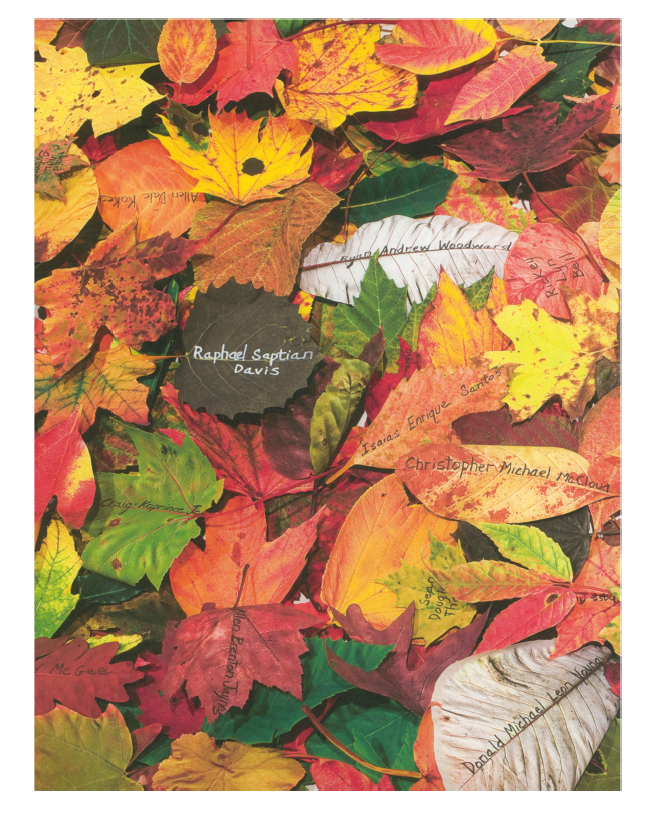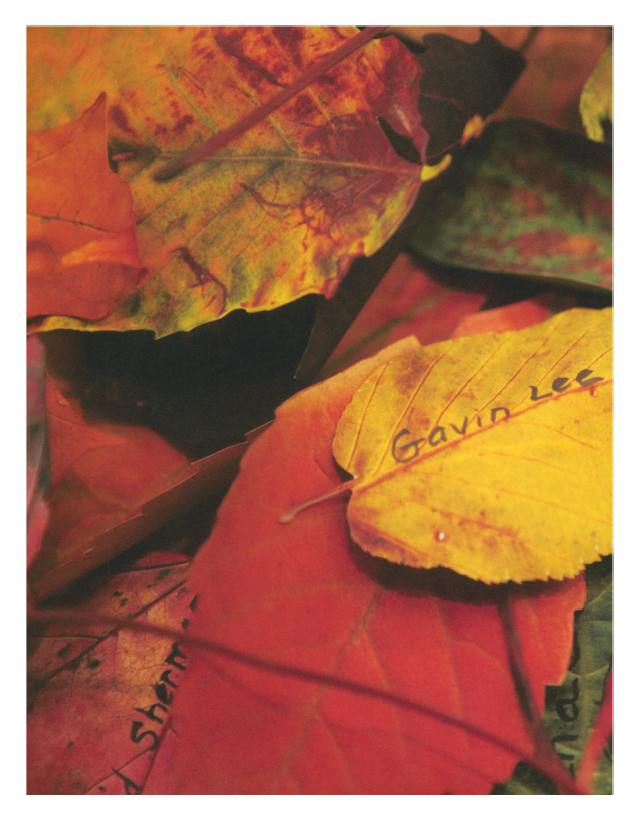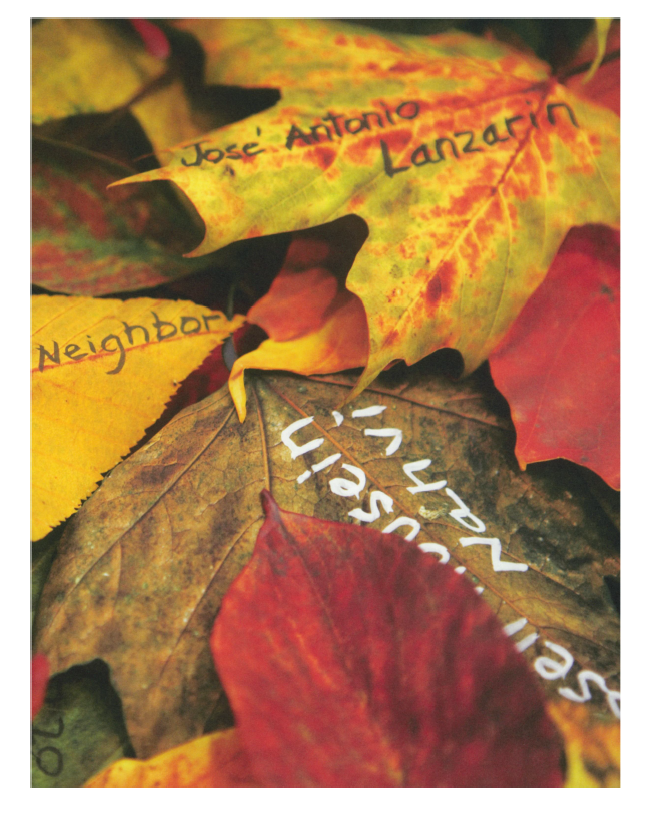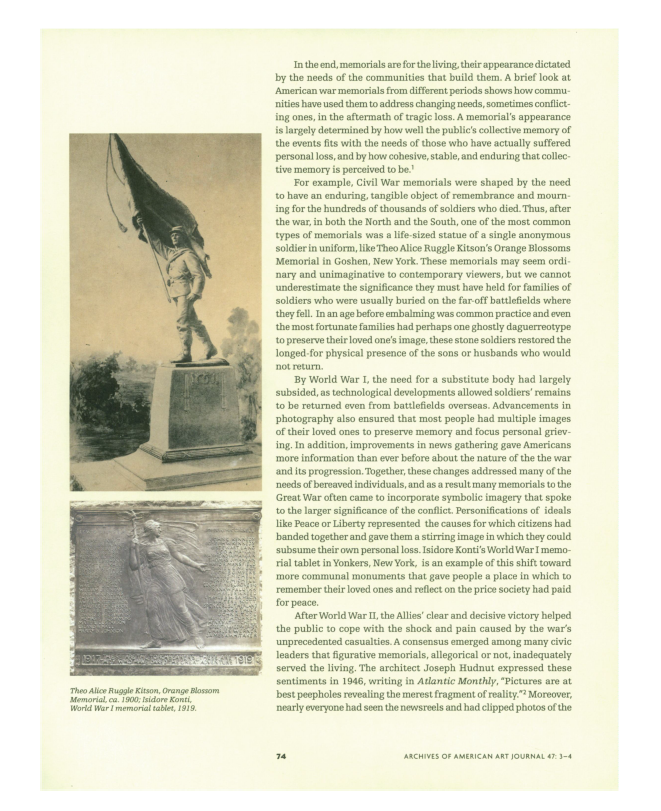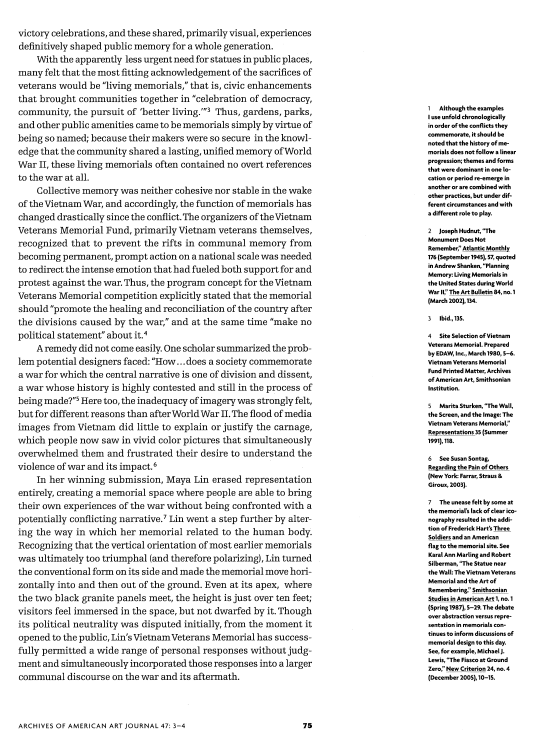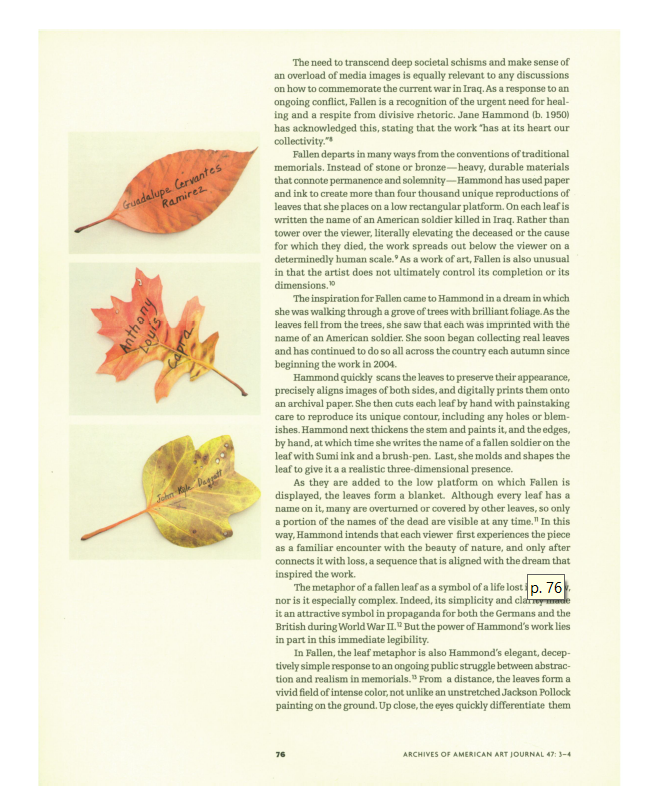The day after Memorial Day, twelve years ago tomorrow in 2008, the then Wexner Center educator Amanda Potter (now Curator of Education and Interpretation at the Zimmerli Art Museum) delivered a talk on Jane Hammond’s gallery B installation Fallen.
At the talk, Potter spoke of how Hammond’s nationally touring installation featuring a large field of colorful, handmade leaves—each inscribed with the name of a U.S. soldier killed in Iraq, fits within the context of traditions of artists responding to war and violence. She also discussed how Fallen functioned as an anti-monument, visualizing loss but with a conflicted relationship to authorized memorialization. This talk laid the groundwork for an article that Potter published in collaboration with the artist called ‘Collecting Leaves, Assembling Memory: Jane Hammond’s Fallen and the Function of War Memorials’ Archives of American Art Journal Vol. 47, No. 3/4 (2008), pp. 66-77.
I post screengrabs of Potter’s article today as a minor anti-monument to the now over 100,000 deaths from COVID-19 in the US.

At the same time as the current US president wages a failing war on the invisible enemy of COVID-19, he describes these deaths as a “badge of honor” for his (false) claims of extensive testing.
In this context, we may ask, is the cover of last Sunday’s The New York Times, also an anti-monument to the Trump administration’s failure to adequately respond to the pandemic?
In any case, like Hammond’s Fallen, it visualizes and names a terrible and inconsolable loss.
